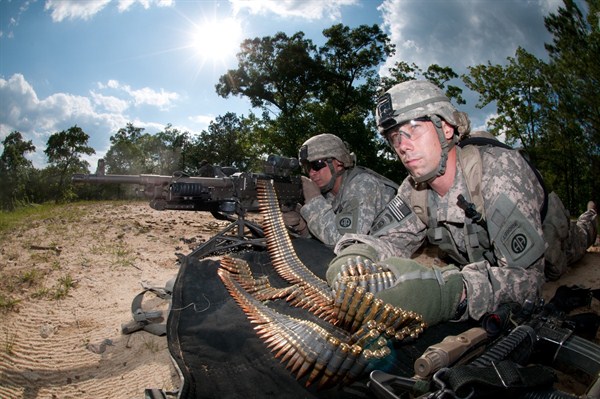Among his many mangled yet astute observations, the legendary New York Yankees baseball catcher Yogi Berra once noted, “It’s tough to make predictions, especially about the future.” This is a dilemma that the architects of American security policy often face. Prediction is hard. But the time it takes to develop new military concepts, organizations and technology, added to the potentially catastrophic consequences of being unprepared, makes it imperative nonetheless.
Exploring ways to identify possible futures demands creativity, but that is often rare in large, bureaucratic organizations, particularly inherently conservative ones like the military. To get around this, the Department of Defense relies on collective creativity—the “hive mind”—rather than individual visionaries. One of the most important methods for this is the use of analytical war games. As Deputy Secretary of Defense Bob Work and Gen. Paul Selva, vice chairman of the Joint Chiefs of Staff, wrote, “Wargames help strip down a strategic, operational, or tactical problem and reduce its complexity in order to identify the few, important factors that constrain us or an opponent.” As Work and Selva went on to explain, the other benefits of war games are that they provide “structured, measured, rigorous . . . environments” that “permit hypotheses to be challenged and theories to be tested.” Perhaps most crucially, they allow the participants to make mistakes under circumstances where they can learn from them. They concluded that “wargaming is one of the most effective means available to offer senior leaders a glimpse of future conflict, however incomplete.”
Since war-gaming offers one of the few ways to wrestle with future security challenges, the Department of Defense takes them seriously. That’s good. But as the strategic environment becomes increasingly complex and the cost of miscalculation increases, the United States must expand the way it approaches war-gaming. War games must become fully interagency in their scope, integrate thinkers and organizations outside the government, and grapple not only with near-term problems—like further Russian aggression, the collapse of a major nation, or the spread of violent Islamic extremism— but also “black swans,” defined as improbable yet high-impact events.

